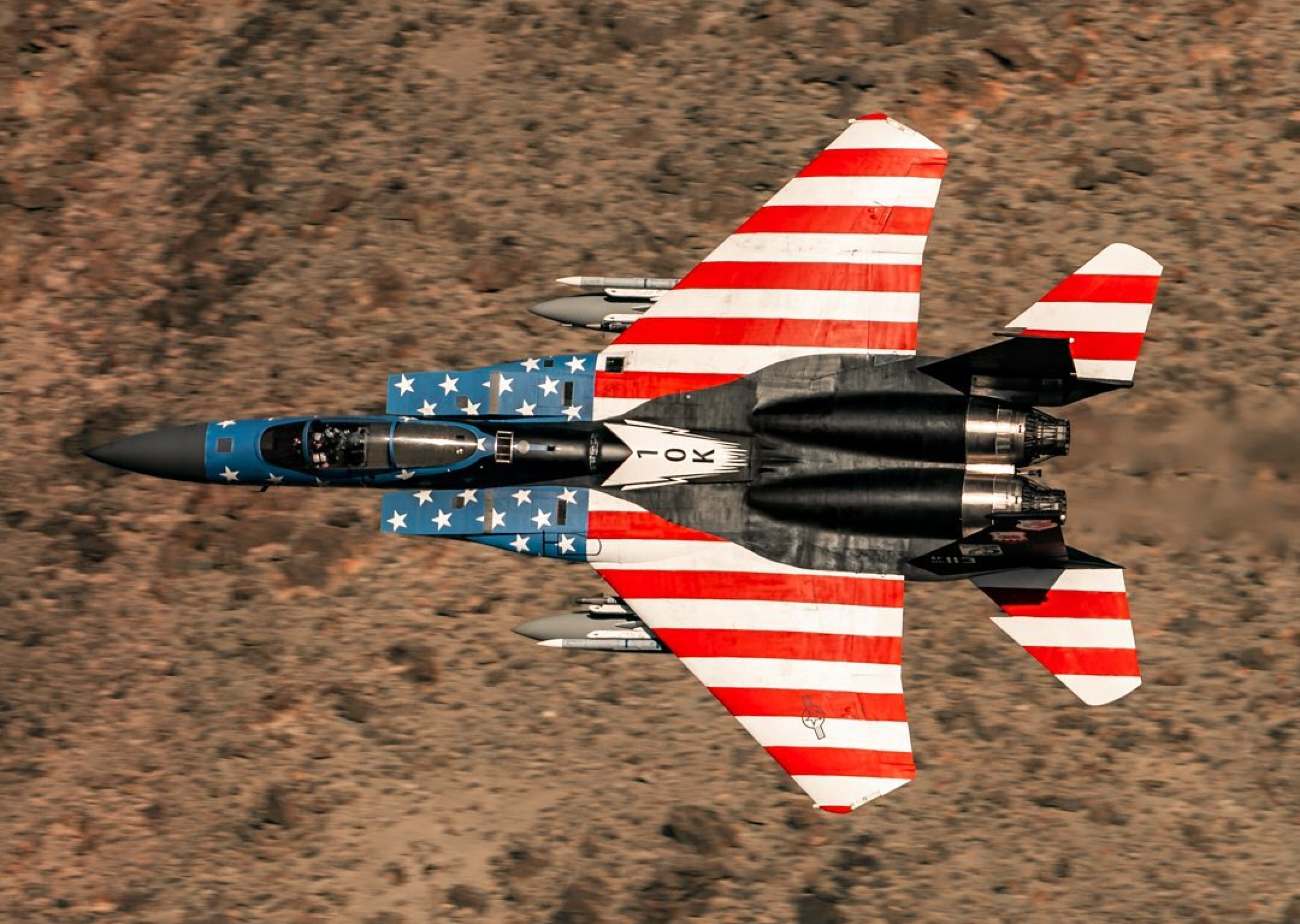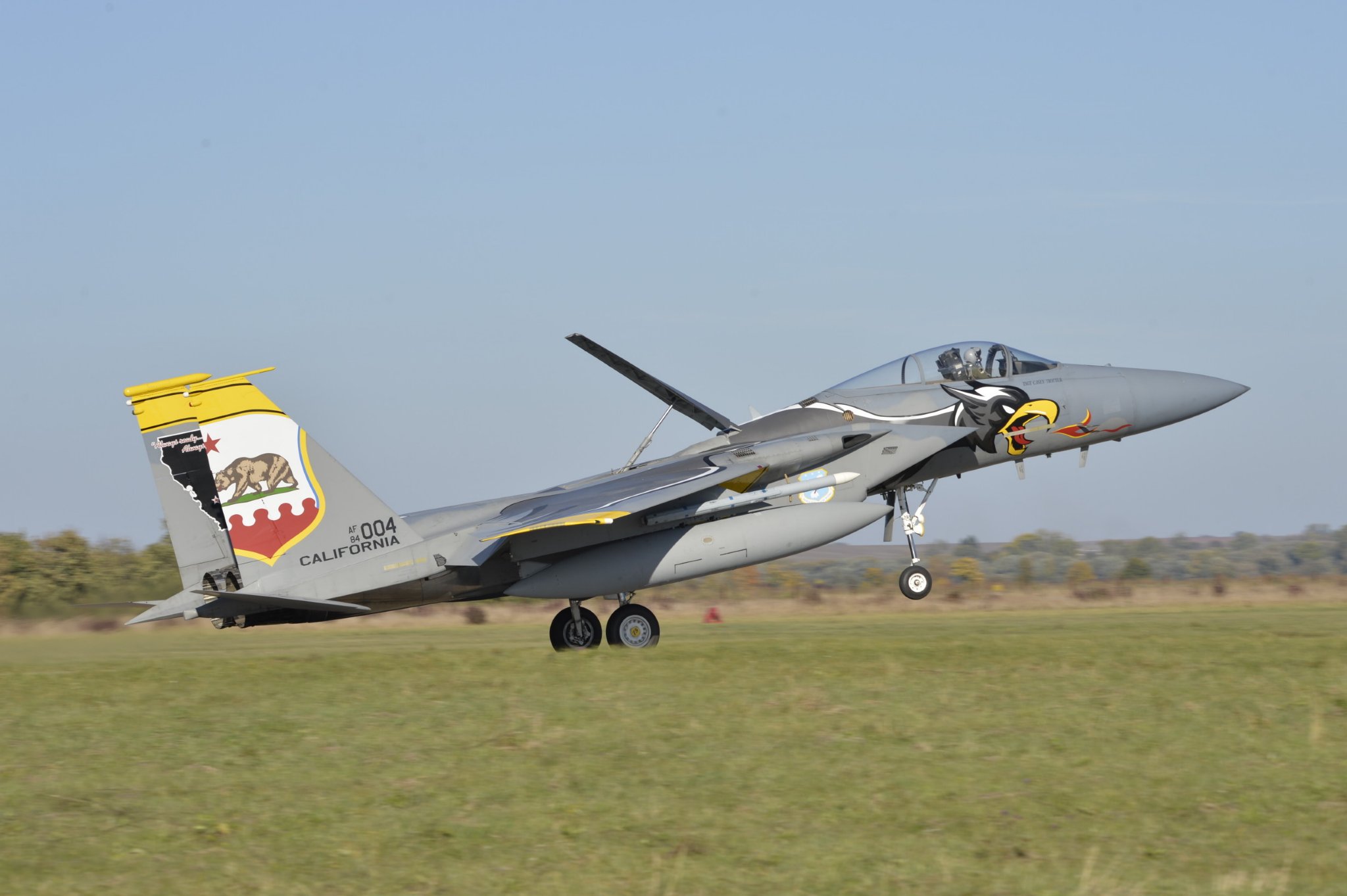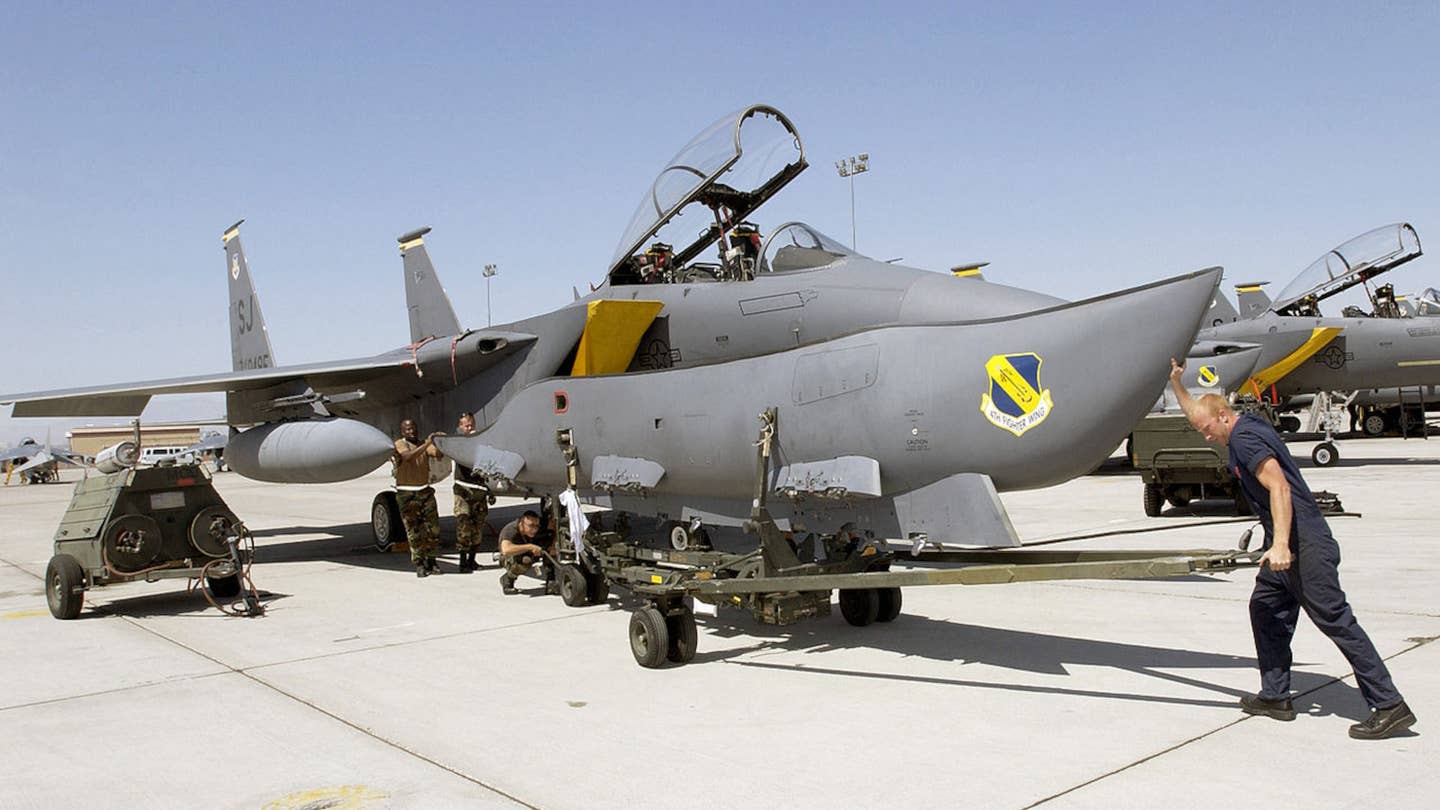Israel has officially requested the all-new F-15EX fighters from the US, as per media reports.
Israeli Defense Ministry reportedly sent an official Letter of Request (LOR) for the warplanes to the US government earlier this month. The LOR is the first step in the process of Foreign Military Sale, after which details on numbers and pricing are negotiated.
According to the sources cited by Breaking Defense, Israel has requested 25 F-15EX fighters, but the Israeli Air Force is already hoping to double the order.
Israel has gone through five general elections in less than four years, delaying the official decision to purchase the advanced version of the F-15. In 2020, the Israeli government decided to procure additional F-35 and F-15 fighters. While the contract for the F-35 was signed, the one for the F-15 was not.
Now that the LOR has been sent, the earliest deliveries of the F-15EX are expected to happen in 2028. However, according to a defense source, the Israeli government might ask the US to shorten the timeline.
The IAF wants 25 F-15EX and simultaneously upgrades its 25 F-15I variants to the same configuration as the F-15EX, except for the fly-by-wire system. Currently, the IAF operates 50 F-15 A/B/C/D variants and 25 F-15 I.
For a long time, the IAF has expressed an urgent need for more F-15s that can be armed with some weapons developed in Israel, specifically to destroy hardened targets like the Iranian nuclear sites.
IAF’s decision to acquire more F-15s and F-35s was based on the assumption that in future combat scenarios, targets will be protected by advanced air defense systems, which will warrant a first wave of F-35s to destroy/suppress the air defense systems, which could then be followed by the F-15s armed with heavy loads of very advanced weapons.
Those assumptions seem to manifest, judging by the improving defense relations between Russia and Iran. Recent reports hint at a potential sale of Russian S-400 air defense systems to Iran, which plans to deploy them to safeguard its nuclear sites.
The F-15’s Exceptional Combat Record!
The 50-year-old F-15 airframe remains a workhorse of the Air Forces of the US and its allies because of its massive payload, range, and speed. And in all these years, the aircraft has had an exceptional track record in combat.
Powered by two Pratt & Whitney F100-PW-100 afterburning turbofan engines which provide a whopping 23,500 pounds of thrust (with afterburners), the F-15 was so powerful that it could surpass the speed of sound even while performing a vertical climb.
The fighter jet has a maximum speed of Mach 2.5, with the greatest strike range of 2,222 kilometers. Also, the F-15 could carry three 600-pound external fuel tanks that extended its range to around 4828 kilometers with no aerial refueling required.
This incredible range and the F-15’s ability to cruise without afterburners at Mach 0.9 meant the F-15 could nearly travel across the world at a moment’s notice.
Equipped with an advanced AN/APG-63 nose-mounted radar, the F-15 could detect even low-flying enemy planes at a range of up to 321.86 kilometers.
Also, this radar system was the first to use a programmable system processor that allowed for some updates and improvements without needing to change the hardware. This approach has since become an integral feature of the F-35, which receives frequent software updates to improve its performance.
The first F-15A took to skies on July 27, 1972, with the first flight of the two-seat F-15B following in July 1973, and only six years later, the aircraft type scored its first air-to-air kill in June 1979, when an Israeli Air Force F-15A shot down a Syrian MiG-21.
Since then, the Israeli, Saudi and American pilots kept adding to the F-15’s spectacular win streak, scoring 104 air-to-air victories until 2008, without a single loss to enemy fighters. Notably, the Israeli Air Force scored most of these kills.
Among the fighters taken down by F-15s include a range of MiG fighters, Mirage F-1s, one transport aircraft, and an Iraqi MI-24 Hind attack helicopter in 1991 during Operation Desert Storm, which notably, was shot down using a 2,000-pound GBU-10 laser-guided bomb.
By 1986, the F-15 airframe had proven so capable that it was decided to field a new variant that could undertake air-to-surface missions. It was called the F-15E Strike Eagle, and because of its incredibly long range, high speed, and massive ordnance-carrying capabilities, the fighter replaced the F-111 Aardvark supersonic bomber.

Notably, the Strike Eagle was equipped with a LANTRIN (Low Altitude Navigation and Targeting Infrared for Night) forward-looking infrared laser and targeting pod. It could carry up to 24,000 pounds of ordnance.
The New F-15EX Eagle II
The F-15EX is the latest model of the F-15 air superiority fighters, reportedly brought in to replace the Air National Guard units’ successful but aging fleet of F-15C/Ds that protect America’s maritime borders.
As reported earlier by EurAsian Times, the F-15EX is identical to a conventional F-15 but incorporates a new fly-by-wire (FBW) system, a more effective processor, and advanced electronic warfare (EW) suite.
FBW is a semi-automatic, computer-regulated aircraft flight control system (FCS) that replaces mechanical flight controls with an electronic interface.
Traditional mechanical and hydro-mechanical FCS uses a series of levers, rods, cables, pulleys, and more, which pilots have to move to adjust control surfaces to aerodynamic conditions.

While mechanical flight controls give pilots a direct feel of how the aircraft handles aerodynamic forces while flying, they are also complicated to operate, require constant monitoring, are heavy and bulky, and need regular maintenance.
The electronic FWB system is much lighter and less bulky than mechanical controls, offering increased fuel efficiency and flexibility in aircraft design, even in legacy platforms. Also, most FWB systems have triple or quadruple redundancy backups built to avoid critical flight failure.
The F-15EX is designed around what is known as an Open Mission Systems (OMS) architecture, which allows rapid insertion of the latest capabilities and systems.
Apart from replacing the old F-15C/D models, the F-15EX is meant to team up with the stealthy F-35 or F-22 fighter jets for some missions.

Because of the Eagle 2’s ability to carry a much larger weapons payload than fifth-generation types, it is being eyed for roles to carry future hypersonic missiles that could not be accommodated inside a fifth-generation fighter weapons bay.
It will be the first aircraft in the USAF to be equipped with the new Hypersonic Attack Cruise Missile (HACM).
Considering the F-15EX’s top speed of Mach 2.5 and a combat range of over 2000 kilometers, compared to the F-35’s range of only around 1000 kilometers, it is the best tactical jet for carrying hypersonic missiles over extended distances.
Hypersonic weapons will only become more critical as threats from near-peer nations such as Russia and China keep growing.
Currently, China and Russia are the only countries with operational hypersonic weapons, and Russia has even used its Kinzhal hypersonic missile in the ongoing Ukraine war. In contrast, the US is still catching up.
Also, the F-15EX could become one of the first aircraft in the USAF fleet to carry laser weapons, a priority for the US military, as discussed extensively in a previous EurAsian Times article.
The USAF received its first high-energy laser weapon in July 2022, called LANCE (or Laser Advancements for Next-generation Compact Environments), from Lockheed Martin.
LANCE is a pod weapon that can be fitted on an aircraft with the primary laser weapon supplied by Lockheed Martin and the pod carrying LANCE made by Boeing. Also, the beam control system that trains the laser on its target is provided by Northrop Grumman.

It is unclear how much power this new laser weapon will produce, but reports indicate it will probably not exceed 100 kilowatts.
It is also unknown which aircraft will test or deploy this pod laser weapon. However, Boeing had tested a pre-prototype pod shape on a USAF F-15 fighter. At the same time, Lockheed Martin had also previously shown the pod carried by an F-16 fighter jet in its concept art.
That said, there seems to be a trade-off in terms of the range of the aircraft, as recent reports suggest that unlike its predecessor, the new EX variant of the F-15 will not be carrying Conformal Fuel Tanks (CFTs) that provided the previous variants an extended range of over 4,000 kilometers.
The F-15EX Might Not Fly As Far As Its Predecessors
According to a newly released Pentagon report, the US Air Force’s initial batch of operational F-15EXs will not be equipped with CFTs, significantly reducing the F-15’s range, which has been a key selling point for the type in the past.
The CFT decision was disclosed by the Pentagon’s Office of the Director of Operational Test and Evaluation (DOT&E) in its most recent annual report released on January 19. The report does not specify why Air Combat Command (ACC) decided to nix the CFTs for the first operational units.

At present, the service does have two F-15EXs equipped with CFTs, one of which is being employed for developmental testing and the other one for simultaneous operational test and evaluation work.
“The lack of CFTs will limit the number of external pods and air-to-ground weapons. The F-15EX will be able to employ,” the DOT&E’s annual report adds. “Until CFTs are procured and provisioned, F-15EX’s air-to-ground capabilities will be very limited.”
This is true, as the CFTs do not just add extra fuel. They can also be fitted with up to six pylons carrying various air-to-air ground missiles, precision-guided bombs, and other stores, which would figure prominently in the list of requirements of the Israeli Air Force that pioneered the use of CFTs for transforming fighters into long-range strike platforms.
That said, there is always a possibility that CFTs could be added to the F-15EX fighters after they are inducted into operational service.
- Contact the author at tanmaykadam700@gmail.com
- Follow EurAsian Times on Google News




